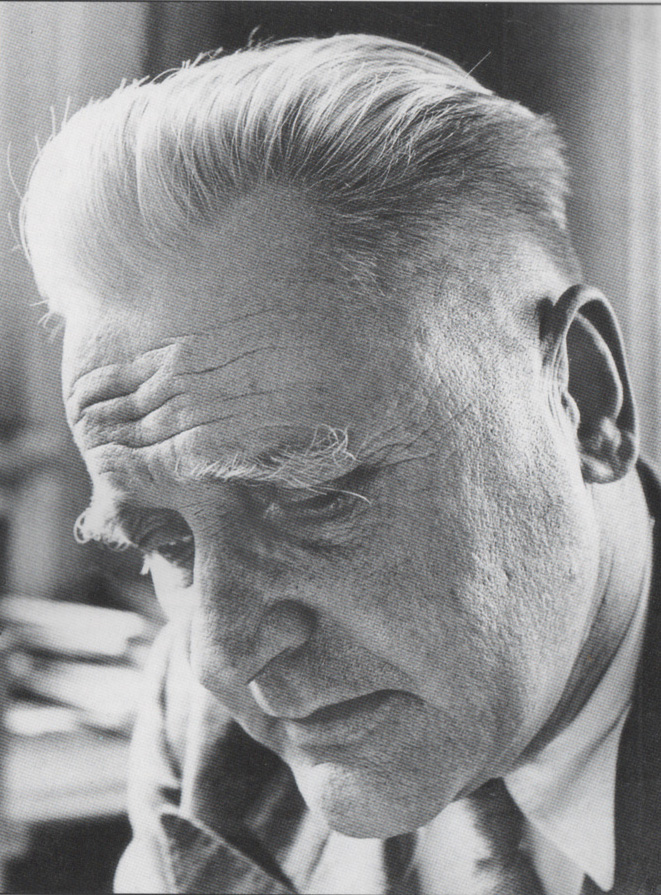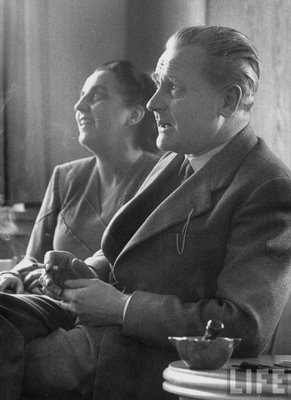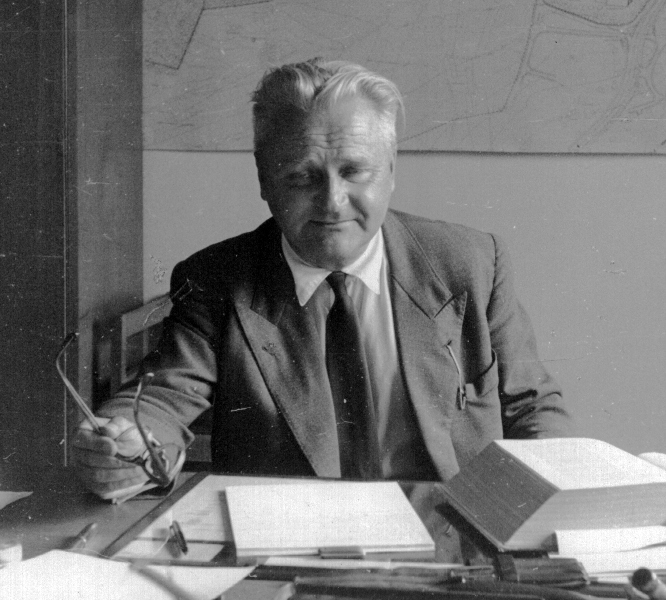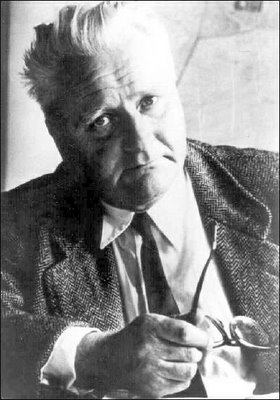<Back to Index>
- Aerospace Engineer Eugen Sänger, 1905
- Painter and Composer Mikalojus Konstantinas Čiurlionis, 1875
- 16th Prime Minister of Australia Joseph Benedict Chifley, 1885
PAGE SPONSOR



Eugen Sänger (22 September 1905 - 10 February 1964) was an Austrian - German aerospace engineer best known for his contributions to lifting body and ramjet technology.
Sänger was born in the former mining town of Preßnitz (Přísečnice), Chomutov (flooded by the Preßnitz dam in 1974) in Bohemia, at that time part of the Austro - Hungarian Empire. He studied civil engineering at the Technical Universities of Graz and Vienna. As a student, he came in contact with Hermann Oberth's book Die Rakete zu den Planetenräumen ("By Rocket into Planetary Space"), which inspired him to change from studying civil engineering to aeronautics. He also joined Germany's amateur rocket movement, the Verein für Raumschiffahrt (VfR - "Society for Space Travel") which was centered on Oberth.
Sänger made rocket - powered flight the
subject of his thesis, but it was rejected by the
university as too fanciful. He was allowed to graduate
when he submitted a far more mundane paper on the
statics of wing trusses.
Sänger would later publish his rejected thesis
under the title Raketenflugtechnik ("Rocket
Flight Engineering") in 1933. In 1935 and 1936, he
published articles on rocket - powered flight for the
Austrian journal Flug ("Flying.")
These attracted the attention of the Reichsluftfahrtministerium (RLM, or
"Reich Aviation Ministry") which saw Sänger's
ideas as a potential way to accomplish the goal of
building a bomber that could strike the United States
from Germany (the Amerika Bomberproject).
Sänger agreed to lead a rocket development team in the Lüneburger Heide region in 1936. He gradually conceived a rocket - powered sled that would launch a bomber with its own rocket engines that would climb to the fringe of space and then skip along the upper atmosphere - not actually entering orbit, but able to cover vast distances in a series of sub-orbital hops. This remarkable design was called the Silbervogel ("Silverbird") and would have relied on its fuselage creating lift (as a lifting body) to carry it along its sub-orbital path. Sänger was assisted in this design by mathematician Irene Bredt, whom he married. Sänger also designed the rocket motors that the space - plane would use, which would need to generate 1 meganewton (225,000 lbf) of thrust. In this design, he was one of the first to suggest using the rocket's fuel as a way of cooling the engine, by circulating it around the rocket nozzle before burning it in the engine.
By 1942, the Reich Air Ministry canceled
this project along with other more ambitious and
theoretical designs in favour of concentrating on
proven technologies. Sänger was sent to work for
the Deutsche Forschungsanstalt für
Segelflug (DFS, or
"German Gliding Research Institute"). There he did
important work on ramjet technology
until the end of World War II.
After the war ended, Sänger worked for the French government and in 1949 founded the Fédération Astronautique. Whilst in France, he was the subject of a botched attempt by Soviet agents to win him over. Joseph Stalin had become intrigued by reports of the Silbervogel design and sent his son, Vasily, and scientist Grigori Tokaty to convince him to come to the Soviet Union, but they failed to do so. It has also been reported that Stalin instructed the NKVD to kidnap him.
In 1951, he became the first President of the International Astronautical Federation.
By 1954, Sänger had returned to Germany and three years later was directing a jet propulsion research institute in Stuttgart. Between 1961 and 1963 he acted as a consultant for Junkers in designing a ramjet - powered space - plane that never left the drawing board. Sänger's other theoretical innovations during this period were proposing means of using photons for interplanetary and interstellar spacecraft propulsion, including the solar sail.
He died in Berlin. The Sänger's grave is
located on the cemetery "Alter Friedhof" in Stuttgart - Vaihingen.
His work on the
Silbervogel would prove
important to the X-15, X-20 Dyna-Soar, and
ultimately Space Shuttle programs.

